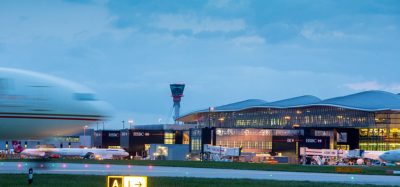In the hotseat: Claire Waghorn, Christchurch International Airport
Posted: 6 August 2024 | International Airport Review | No comments yet
Claire Waghorn, Sustainable Transition Leader at Christchurch International Airport Limited (CIAL), speaks to International Airport Review about what her airport is working on in terms of sustainability, what the industry needs to do and whether there is a silver bullet solution.


Congratulations on achieving the highest Airport Carbon Accreditation Level 5! What’s next for CIAL?
The past four years have been significant milestone years where we set ourselves ambitious projects and goals, culminating in last year’s achievement of ACA Level 5 at COP28, the UN Climate Conference in Dubai.
This year is about consolidation. It is not any less ambitious but is much more internally focused. We will be continuing with our renewable energy precinct, strategic pathway planning for green hydrogen and future aviation requirements, biodiversity frameworks, circularity and a wider ESG programme across our business. This includes enhancing sustainability fluency across the business.
Join us live: Shaping the Next Generation of Hold Baggage and Air Cargo Screening
Join us live for an insightful webinar on 11th December at 14:00 GMT, in collaboration with Smiths Detection, as we explore the strategic balance of operational efficiency, regulatory compliance, and sustainability in high-volume security environments.
This session offers a focused look into future-proofing your security strategy.
Key learning points
- Cost Reduction: Strategies to minimize bag travel time while simultaneously reducing operational costs.
- Regulatory Roadmap: Insights into the next wave of regulatory changes and their impact on future investment decisions.
- Sustainable Systems: Practical approaches to building sustainability into security systems and lowering the total cost of ownership (TCO).
- Scalable Solutions: Real-world examples of scalable systems supporting current airport growth and preparing for tomorrow.
Register now for expert insights, case studies, and actionable strategies on operational efficiency!
You have said that we cannot address the greatest challenge of our time without everyone onboard, the energy sector alone requires a tripling of the workforce, what is CIAL doing in the spirit of this?
We have set aside 400 hectares for the development of a renewable energy precinct, known as ‘Kowhai Park’, on the western side of our airport. Phase 1 of this is a 170MW solar farm, which allows us to upgrade our electricity transmission and distribution infrastructure, as well as contribute to the generation required for future aviation needs.
For New Zealand to completely transition our domestic aviation to green hydrogen by 2043, we would need 32 times the scale of Kowhai Park, so a lot more generation is required. But it is critical that we start the process in order to be ready for future aircraft, and it is hugely advantageous – if airports have the space available to generate future fuel on-site, it allows you to address emissions, lower transmission loss and costs, improve resilience, and create a potential future revenue stream.
if airports have the space available to generate future fuel on-site, it allows you to address emissions, lower transmission loss and costs, improve resilience, and create a potential future revenue stream”
How easy has it been for CIAL to access green finance to invest in costly sustainable developments?
With all our projects, our philosophy has always been that they need to be financially sustainable as well as environmentally. So, we haven’t undertaken significantly ‘costly sustainable developments’. In our experience, our projects to date have provided great returns on investment – which is often the case with energy efficiency, or swapping to renewable energy activations.
We do have a Sustainability-Linked Loan, set up in 2021, which is linked to our sustainability commitments which has been very helpful. When we meet our sustainability targets we get financially incentivised, and if we missed them, we would be penalised. This is increasingly common amongst airports now to link their sustainability programmes to finance.
How have you found the appetite among your stakeholders to reduce their own emissions so this is reflected in your scope 3 emissions? How do you incentivise them?
We have very progressive airline partners and stakeholders that are leaning into the challenge of addressing airline emissions (our scope 3). This includes our largest carrier, Air New Zealand, having set science-based targets and an emissions reduction pathway to achieve those. They are actioning that with a programme that brings new novel propulsion aircraft into their fleet over the next decade. It is our job to line up the infrastructure to support that plan, so that we don’t hold it up even for a day. So, we work closely with our Hydrogen Consortium, and experts across the ecosystem, to understand what levers we can pull to try to accelerate the transition.
How is climate change affecting your airport right now and what is the biggest risk you are facing in the next decade?
In New Zealand, we have a compulsory Climate Risk Disclosures regime, so we have gone through the process of understanding at an operational level right up to Board level, how climate change is affecting us, our wider network, and what the risks and opportunities are. Christchurch Airport is relatively well placed in terms of our geographic location, we will face increased temperatures, wildfires, droughts, rainfall, wind events and so on, but when compared to the wider network, our risk is probably to a lesser degree than most.
We did elevate the transitional risks in our analysis though. Transitional risks is the term used to cover risks in the technology, policy, legal, market, and reputation. For example, what if the technology to transition is not available to us? What if the policy and regulatory response is too slow? What social licence will we have as a hard to abate sector, and how can we be transparent in our actions to transition?
How do you involve the wider CIAL airport employees in the green mission?
All our airport staff have shared responsibility for our sustainability outcomes, just like they do for our health and safety outcomes, or being fiscally responsible with their allocated budgets. That being said, some have more obvious sustainability levers than others, but the idea is that each staff member would look for the opportunities within their roles to further drive our sustainability outcomes. Our sustainability team find it particularly rewarding when projects are enacted from entirely different parts of our business i.e. our property team overseeing an electric vehicle charging hub, or our terminal service team overseeing furniture refurbishment.
What are the three things you are working on right now in your role?
Three things I’m working on right now in my role are hydrogen strategy, ESG strategy and biodiversity framework.
Do you genuinely think the airport sector can become ‘green’? Is this kind of question damaging?
The aviation sector needs to decarbonise and rapidly; if we don’t, we won’t have an industry, let alone a planet to live on. Every industry, every country, every business, every citizen needs to do its part, and aviation is no exception. However, the term becoming ‘green’ can be subjective and open to confusion, or worse misleading. We need to be upfront about the challenges our industry faces, and transparent about the efforts we are undertaking, including when these fail. Airports have much greater opportunities now to decarbonise than the airlines do, so we need to lead those changes, and be collaborative partners with respect to preparing future infrastructure for decarbonising aviation.
We need to use really specific language around what we can achieve, so there is less chance of misinterpretation or misleading. For example, instead of using the term ‘climate positive’, we can explain we have reduced our scope 1 and 2 emissions by over 90% against our 2015 baseline, and will continue to work on reducing them. In the meantime, we are purchasing high integrity reduction New Zealand native forestry units to sequester the equivalent of the remaining 120%. Yes, it’s a lot wordier, and doesn’t make for great headlines, but it’s much more pinpointed around what actual actions are taking place. Likewise, we probably want to talk about ‘lower emissions aviation’, rather than ‘zero emissions aviation’ – as there will still be embodied emissions in the construction materials even if we do manage to transition to totally clear future fuels such as green hydrogen. There is so much work to be done to transition our industry, let’s be upfront around what we have to do, and how we plan on doing it.
Airports have much greater opportunities now to decarbonise than the airlines do, so we need to lead those changes, and be collaborative partners with respect to preparing future infrastructure for decarbonising aviation”
Is hydrogen/SAF/electric the silver bullet the aviation industry is looking for?
I think sustainability rather than technology is the ‘silver bullet’ (assuming we accept the premise that a silver bullet is possible when used in the context of a much broader concept). The IPCC (International Panel on Climate Change) have a ‘avoid-shift-improve’ framework, which reflects decarbonisation opportunities as being socio‑cultural, infrastructural and technological. This means avoiding unnecessary travel, shifting to low emissions alternatives (in Europe’s case you see a shift to electric rail where that makes sense), and then improve which is about improving aviation and infrastructure technology. This is where green hydrogen, clean electric, and truly sustainable SAF would come in as part of the solution.
Are you still battling arrogance in the airport sustainability space?
I’m not sure I have battled arrogance in this space. I find the airport sustainability space to be incredibly collaborative – it is one of my favourite things about my job and the industry, that you have such an incredible willingness to share and learn from one another. I consider the sustainability leads at the progressive airports around the region and globally to be my closest allies, who I lean on for support and get much inspiration from.
What is your most controversial opinion on airport sustainability?
Perhaps that “business as usual” is dated and boring, and sustainability isn’t controversial, it isn’t anti-commercial, that it is simply good modern business practice. It makes fiscal sense to decarbonise assets and operations, as well as supporting your social licence to operate, and enhancing your reputation amongst current and future workforce. Nobody wants to work for laggard industries, so there is every advantage in being more sustainable – for our planet, for our people, and for prosperity.
Nobody wants to work for laggard industries, so there is every advantage in being more sustainable – for our planet, for our people, and for prosperity”
What is keeping you awake at night?
New Zealand’s pathway to domestic aviation transition, and how to activate it in time. We have goals to achieve in 2030 which require huge investment decisions, and we need infrastructure to be operational, which is only six years away. The pace of change required is fast, and there is a whole ecosystem to line up, including new energy generation, distribution upgrades, regulatory bundles for novel propulsion aircraft and hydrogen handling, hydrogen facilities at scales not seen before, and then the offtake agreements. The new aircraft developments are so exciting, but the infrastructure required needs a lot of work to be ready.


Credit: CIAL.
About the author
Claire Waghorn is the Sustainable Transition Leader at Christchurch Airport. She is a Barrister and Solicitor of the High Court of New Zealand with a focus on international climate law, with MSc International Relations (LSE, London), and LLB and BA (Hons) in Diplomacy and International Relations (UC, New Zealand). She is currently working towards accelerating the transition within the aviation sector towards zero emissions. Claire’s previous roles include Parliamentary Researcher for the Green Party of Aotearoa New Zealand, and Foreign Policy Officer for the Ministry of Foreign Affairs.
Claire currently sits as a Director of Hollin Consulting NZ, a Board Member of the New Zealand Centre for Global Studies, and the Kaikoura Canterbury Lotteries Commission, as well as the International Airport Review Advisory Board.
More Like This
Talking freight, real estate and sustainability with Phil Forster
‘Gold route service,’ luxury travel experience at BIA
Increasing air routes to Halifax, Canada
Stay Connected with International Airport Review — Subscribe for Free!
Get exclusive access to the latest airport and aviation industry insights from International Airport Review — tailored to your interests.
✅ Expert-Led Webinars – Gain insights from global aviation leaders
✅ Weekly News & Reports – Airport innovation, thought leadership, and industry trends
✅ Exclusive Industry Insights – Discover cutting-edge technologies shaping the future of air travel
✅ International Airport Summit – Join our flagship event to network with industry leaders and explore the latest advancements
Choose the updates that matter most to you.
Sign up now to stay informed, inspired, and connected — all for free!
Thank you for being part of our aviation community. Let’s keep shaping the future of airports together!
Issue
Related topics
Social responsibility, Sustainability, Sustainable Aviation Fuel (SAF), Sustainable development
Related airports
Related organisations
Airport Carbon Accreditation (ACA), Green Party of Aotearoa New Zealand, High Court of New Zealand, Hollin Consulting NZ, International Airport Review, Kaikoura Canterbury Lotteries Commission, New Zealand Centre for Global Studies, The IPCC (International Panel on Climate Change), United Nations (UN)

















